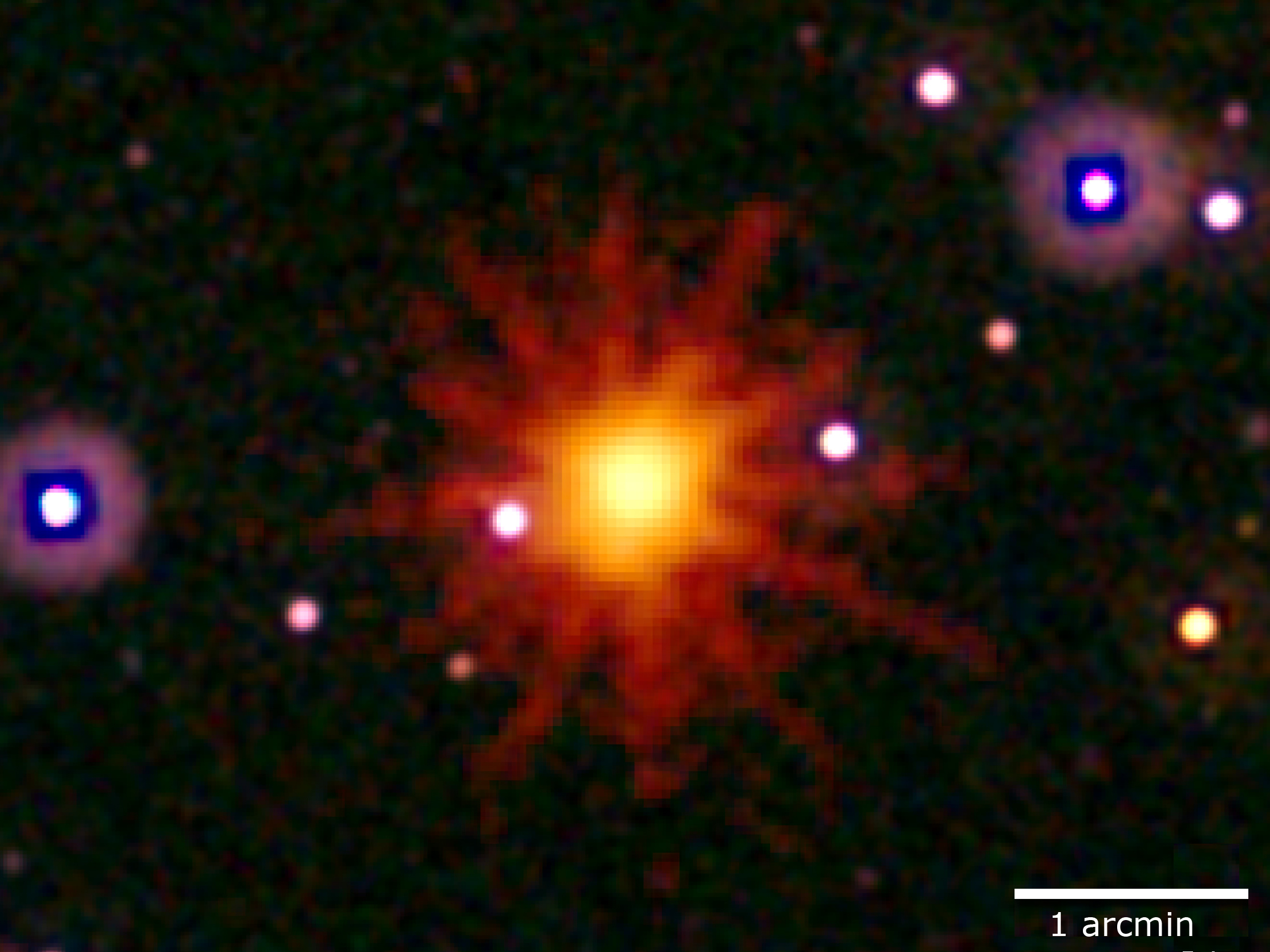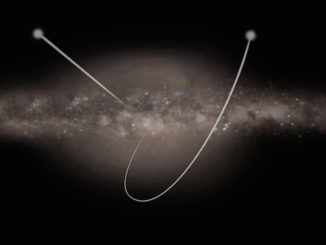

“While we don’t yet understand what causes X-ray flares near the black hole, we know that when one occurs we can detect its echo a couple of minutes later, once the light has reached and illuminated parts of the flow,” Kara explained. “This technique, called X-ray reverberation mapping, has been previously used to explore stable discs around black holes, but this is the first time we’ve applied it to a newly formed disc produced by a tidal disruption.”
Stellar debris falling toward a black hole collects into a rotating structure called an accretion disc. There the gas is compressed and heated to millions of degrees before it eventually spills over the black hole’s event horizon, the point beyond which nothing can escape and astronomers cannot observe. The Swift J1644+57 accretion disc was thicker, more turbulent and more chaotic than stable discs, which have had time to settle down into an orderly routine. The researchers presented the findings in a paper published online in the journal Nature yesterday.
One surprise from the study is that high-energy X-rays arise from the inner part of the disc. Astronomers had thought most of this emission originated from a narrow jet of particles accelerated to near the speed of light. In blazars, the most luminous galaxy class powered by supermassive black holes, jets produce most of the highest-energy emission.
“We do see a jet from Swift J1644, but the X-rays are coming from a compact region near the black hole at the base of a steep funnel of inflowing gas we’re looking down into,” said co-author Lixin Dai, a postdoctoral researcher at UMCP. “The gas producing the echoes is itself flowing outward along the surface of the funnel at speeds up to half the speed of light.”
X-rays originating near the black hole excite iron ions in the whirling gas, causing them to fluoresce with a distinctive high-energy glow called iron K-line emission. As an X-ray flare brightens and fades, the gas follows in turn after a brief delay depending on its distance from the source.
“Direct light from the flare has different properties than its echo, and we can detect reverberations by monitoring how the brightness changes across different X-ray energies,” said co-author Jon Miller, a professor of astronomy at the University of Michigan in Ann Arbor.
“If we only look at active black holes, we might be getting a strongly biased sample,” said team member Chris Reynolds, a professor of astronomy at UMCP. “It could be that these black holes all fit within some narrow range of spins and masses. So it’s important to study the entire population to make sure we’re not biased.”
The researchers estimate the mass of the Swift J1644+57 black hole at about a million times that of the Sun but did not measure its spin. With future improvements in understanding and modelling accretion flows, the team thinks it may be possible to do so.



